
The Rise of South America and the Fall of Europe
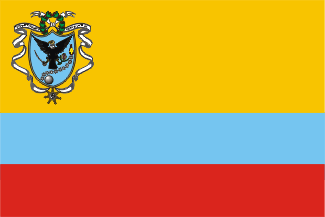
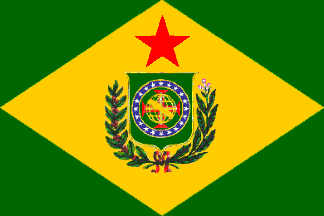
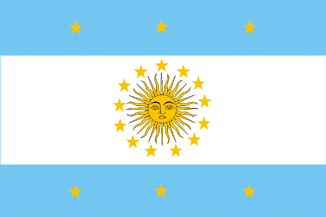
During the Napoleonic wars, Britain attempted to expand their interests in South America. The Maitland plan of invading Argentina and Venezuela was on the verge of being implemented in 1806 when an opposing group within the government instead decided to support an alternative: to help young army officers born in South America lead an insurrection against Spain. They began to support the Venezuelan Francisco Miranda and his La Gran Reunion Americana lodge. The delay played them right in their hands; the Peninsular War in Europe regional juntas formed to resist the new king, and the revolutionaries began to spread the revolution across the continent.
Much of the independence of the continent occurred roughly similar to our timeline, if somewhat faster; Venezuela was liberated in 1810, and the foundation of Gran Colombia (a federation of present-day Venezuela, Colombia, Panama, and Ecuador) occurred in 1813 after the decisive Battle of Caraz. Simon Bolivar joined forces with José de San Martín for the final campaign against Peru in 1822, and in September 3 1818 they won the Battle of Lima. Meanwhile the British were, after great initial successes in Spain, getting dug down into the area around Badajoz and unable to let go or advance. While it did not prevent the fall of Napoleon at the Battle of Maastricht, the British had become seriously involved in the bitter Second Spanish Succession War. This in turn led to the breakdown of the Quadruple Alliance and the ensuing 30 years of European instability, as well as the distancing of the South American states from Britain. Beside the reappearance of religious fervor in some regions to drive the war, the intervention of Austria-Hungary in the Italian civil war, became a major driver for further conflict. Central Europe became as divided and violent as the Balkans later would become in Homeline.
When Brazil made itself independent in 1822, Emperor Pedro I called a continental congress to settle the situation. Although the congress did not truly reach any conclusion, the cooperation between Gran Colombia, the Brazilian Empire and Argentina created the seeds for a longer stability. Over the next ten years all three governments had to struggle against major insurrections. In general the solution was, after the second and third continental congress, increased federalism, which to some extent lessened the conflicts. In 1830, the Brazilian government fell to a popular coup supported by the Tiradentes (who had been partially supported by radicals within Gran Colombia and the US), and was reformulated as a republic. The Tiradentista revolt spread across the unstable Gran Colombia, resulting in the civil war 1831-33 which led to the formation of the Federacion Gran Colombia Democracia.
The British-Spanish wars aggravated the conflict with Irish Catholics, and the 1826 rebellion caused the "green genocide" and a massive migration wave of Irish refugees to North and South America. A sizeable Irish-descended minority settled in Gran Colombia and Brazil. The "progressive" South American governments also attracted many intellectuals from war-torn Europe, speeding up development in Rio and Buenos Aires.
In the Ottoman Empire the janissaries supporting Mustafa IV killed his brother as Mustafa rose to the throne, leaving the empire in less skilled hands. The corruption and decline continued until it broke apart a few years later. Muhammad Ali still managed to become pasha of Egypt, and under his skilled leadership Egypt and the other North African Arab countries rose to become major powers in the Mediterranean as the Ottoman Empire dissolved and the European powers were busy dealing with each other. The Marrakesh Alliance between Britain and the pashas helped maintain Britain become the major naval nation and secured its road to India, which became increasingly important for the Empire. In exchange the Egyptians began a systematic approach of colonialism on the eastern coast of Africa.
Under Tsar Alexander I (the "brooding tsar") Russia turned inwards, becoming more concerned with internal matters than outside politics (with the exception of campaigns against the Ottoman chaos, producing some substantial land gains in the south). The Orthodox Church gained more power over the tsars. Russia never sold Alaska to the United States, leaving it as a little developed hinterland suitable only for deporting criminals and freethinkers.
The United States became noticeable smaller when the French did not sell off Louisiana, thinking they could sell it later for a higher price - but as the European chaos grew, it instead became a necessary source of resources. Like several other European powers they found their heartlands increasingly dependent on their colonies, but lacked the free resources to expand them strongly. This kept the United States to eastern America, with British Canada in the north and what would become the California republic on the western seaboard. Although the north and south eventually did fight a civil war it was far smaller than in homeline, but also caused a more lingering tension, weakening the union.
The French presence in North America persevered through several brush-fire wars with both the US, Mexico, Canada and California during the 1800s. In 1912, separatists led by Jean-Gaston Laurent succeeded in gaining independence from metropolitan France. The new capital became Nouvelle Orleans, which enjoyed a few decades of attractiveness for poets, artists and sculptors. The New Orleans school of art would later influence the Novomundo school of South America, leading to a fruitful exchange of ideas and methods.
In the Massacre of the Lowlands in 1830 the clashing north German and French armies devastated the region to the extent that the Dutch government relocated to Batavia in Indonesia (later to be renamed Niuw Amsterdam).
In the middle and late 1800's Holland, Britain and Gran Colombia raced to influence the Pacific. Gran Colombia supported the Hawaiian kingdom, keeping it independent as a trade partner. Britain managed to fuel discontent in Japan, and after the fall of the feudal system it becomes a somewhat unwilling trading partner with Britain; never quite a part of the Commonwealth, never quite outside it.
The 20th Century: The Century of British India
 In 1900 the world economy was
dominated by South America, with an industrialized economy selling manufactured
products to the rest of the world. Although serious tensions remained
on the continent the prosperity and political openness dominated. A series
of trade treaties slowly led in the direction of a united South America.
The United Federated South America was achieved in 1966, taking the pentacolor
flag. The Latin humanism promoted a life affirming, tolerant Catholicism
that did not dwell overly on the supernatural but rather on social conscience
and splendid ritual. Scientifically South America was far ahead of any
other powers, experimenting with supersonic flight in the 1930's, nuclear
power in the 1940's and spaceflight in the 1950's. The main economic hubs
were Caracas, São Sebastião (homeline's Rio de Janeiro) and San Martin
(homeline's Buenos Aires), each massive megacities dominated by the elevated
skyscrapers of the Novomundo school.
In 1900 the world economy was
dominated by South America, with an industrialized economy selling manufactured
products to the rest of the world. Although serious tensions remained
on the continent the prosperity and political openness dominated. A series
of trade treaties slowly led in the direction of a united South America.
The United Federated South America was achieved in 1966, taking the pentacolor
flag. The Latin humanism promoted a life affirming, tolerant Catholicism
that did not dwell overly on the supernatural but rather on social conscience
and splendid ritual. Scientifically South America was far ahead of any
other powers, experimenting with supersonic flight in the 1930's, nuclear
power in the 1940's and spaceflight in the 1950's. The main economic hubs
were Caracas, São Sebastião (homeline's Rio de Janeiro) and San Martin
(homeline's Buenos Aires), each massive megacities dominated by the elevated
skyscrapers of the Novomundo school.
North America was a divided region that did not fully industrialize until later, in the 1930's. The nations were unstable and regularly suffered coups, mismanagement and outside control. After a coup in 1876 the US president gained significant dictatorial power that in turn led to a number of coups (the constitutional restoration did not occur until 1944). California was very much oriented southwards, and allied with Gran Colombia against the Mexican states in the Mesoamerican conflicts.
Europe was slowly recovering from the long conflicts, a relatively peripheral region. The Preussian bunker-nobility was finally made obsolete by the introduction of flight. Although having lost practically all ability to influence the mainland Britain was still most well off. The British Empire included both Canada, Australia and India (as well as several other dominions), but it was India that became the economic motor of the empire. A large part of this was thanks to Sir William Goldstone ("The Maharaja Governor").
Goldstone was governor-primus of India and became deeply enamored by the grandeur and subtelity of Indian culture. He saw the meeting between Britain and India as an ordained consilience, where each could contribute deep civilizing principles to each other. He worked ceaselessly to demonstrate the benefits of cultural exchange, overcome prejudices, old-fashioned misunderstandings and the limitations of colonialism. He wrote a multitude of books articulating his views that gained a popular following in Britain and later India. When he returned from his governorship he became an influential political figure, eventually convincing Parliament to enact the Second Empire Act that made India an equal part of the empire. While this was partially to counter the Indonesian-Dutch imperial ambitions in the Indian Ocean, it also reflected the idea that just as South America had blended disparate cultures into something stronger, so could Britain and India unite into something new (Canada, Australia, Japan and other colonies were seen as culturally irrelevant). It was helped by the closeness of the large Indian-descended population that had originally been brought as farmers to the depopulated Ireland. When Goldstone died in 1935 he was mourned by billions and acknowledged as the greatest statesman of the 20th century. His main literary works were The Delhi Diaries, A Meeting of the Peoples, The Steeple and the Minaret and the poetry collections Monsoon Sonnets and Reminiscences of the Islands.
The Second Empire emerged as the major competitor to South America both economically and culturally. While the Latin humanism promoted an informal rationalist hedonism and a dynamic capitalist society, the British developed a worldview based on class and caste. It was strongly colonialist against "discivilised" nations, as judged by the Goldstone revisionist ideology that emerged. Goldstone revisionism saw history as a continual dualistic struggle between strictness and laxity. Disordered societies inevitably declined and dissolved into anarchy while ordered civilisatory ideas acted as seeds for new and better societies that were morally obliged to impose their order on the discivilised nations. The Second Empire tended to oppose South America, especially when it interfered with its civilisatory duties in underdeveloped nations. The result was a complex cold war, dominated more by political manipulations, economical pressure and propaganda than actual military campaigns (although the South Sea rebellion 1958-59 and the bloody Indonesian civil war 1963-1980 saw several British and American units clash).
The Second Empire lasted 50 years, until it peacefully dissolved in 1986. By that time the drawbacks of the anti-intellectual climate and regulated economy had undermined the material gains made earlier in the century. Latin-supported independence movements were gaining power from Tokyo to Bytown (Ottawa). When the old monarch Edward IV died the Empire officially ended. The next decades saw a massive shift in world politics as the former members of the empire sought new roles. Some were highly successful like Madagascar, others merely plodded along in dreams of nationalist glory like Britain and Japan, and others descended in corruption and chaos like India, Canada and North Sicily.
The end of the 20th century saw a massive jump in living standards but also a massive dislocation of people. Millions moved to the booming megacities, often finding lives of poverty and alienation. At the same time a wild renaissance of subcultures, reinvented nationalisms and new creeds sprouted. Classical Latin humanism found itself threatened by strange ideological fashions like the Nipponese Anglican Church, Verzechne spiritualism, urban ecosophy, extensivism and Nine Rows of Coins. Meanwhile South America was moving towards space, both as a source of raw materials and energy but also as an outlet of cultural diversity.
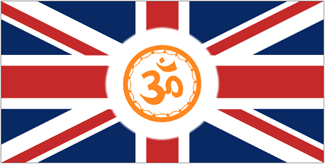 In 1999 the Third British
Empire of Indian Nation was founded in Ahuka, a small Indian city-state.
The founder was the charismatic leader "Aum Chakradeva", a strict secular
Anglican preacher and Indian nationalist. Over the span of the next 15
years he unified much of India and parts of Indonesia into his empire
through a combination of populism promising a return to the glories of
the Second Empire and ruthless military genius. Many intellectuals worldwide
proclaimed him a perfect example of a civilisatory seed, and he was initially
seen as the solution to the many problems of the former Empire.
In 1999 the Third British
Empire of Indian Nation was founded in Ahuka, a small Indian city-state.
The founder was the charismatic leader "Aum Chakradeva", a strict secular
Anglican preacher and Indian nationalist. Over the span of the next 15
years he unified much of India and parts of Indonesia into his empire
through a combination of populism promising a return to the glories of
the Second Empire and ruthless military genius. Many intellectuals worldwide
proclaimed him a perfect example of a civilisatory seed, and he was initially
seen as the solution to the many problems of the former Empire.
Taking his ideas from Sushil Sanjay, a 1950's author not unlike homeline's Kafka, he began to shape a legal system "in the shape of the cosmic order". He instituted a strict caste society run by his loyal generals, promoting anti-intellectualism, conformism, channeled hatred and xenophobia surpassing the worst extremes of the Second Empire.
The Third Empire was hampered by its old infrastructure and reliance on light manufacturing, but found a niche in eco-remediation and later ecological design. By 2030 it was clearly world leader in biotechnological smart matter, despite being subject to strong economic sanctions for its human rights abuses.
"...will herald a brave new era of readiness for the great empire. The High Brahmin, upon the completion of his ritual fast at New Decca, stated that coral defenses are in accordance with divine and material doctrine. In other news..."
- 3rd british News Syndic Main Channel
The Space Age and Teleportation Revolution
The discovery pf phasing nearly simultaneously with mature nanotechnology in 2030 caused a tremendous shock to society. The world had already geared up for accelerating progress, but suddenly the possibilities expanded far beyond anything anyone had foreseen.
Phasing, "teleportation", was accidentally discovered by a research team at the Paraná particle accelerator. It was not seen as time travel, but rather as a slightly erratic way of teleporting object. It was especially suited for moving objects into space from the Earth's surface with a minimal expenditure of energy, and of course as a radical spacedrive in interplanetary space. Control over exact destination was somewhat uncertain, but given the margins in space this was entirely acceptable.
The ongoing space industrialization programs accelerated tremendously. Huge habitats and cargos could be collected on Earth and "teleported" into orbit. Asteroid mining and interplanetary trips became feasible. At the same time many realized the dangers posed by phasing technology, and this speeded the wish to expand outwards into the relative safety of space.
Treaties controlling use of nanotechnology banned most use on Earth, mainly out of fear of nanoweaponry and uncontrollable replicators. This had promoted the use of nanotech research and application in space, and with easy access it seemed that the future was in the stars rather than "in the mud". A major exodus of people began, causing a noticeable brain drain and economic transition unsettling the "old" terrestrial economy. In the space colonies nanotech was being used for manufacturing, building habitats and exploration.
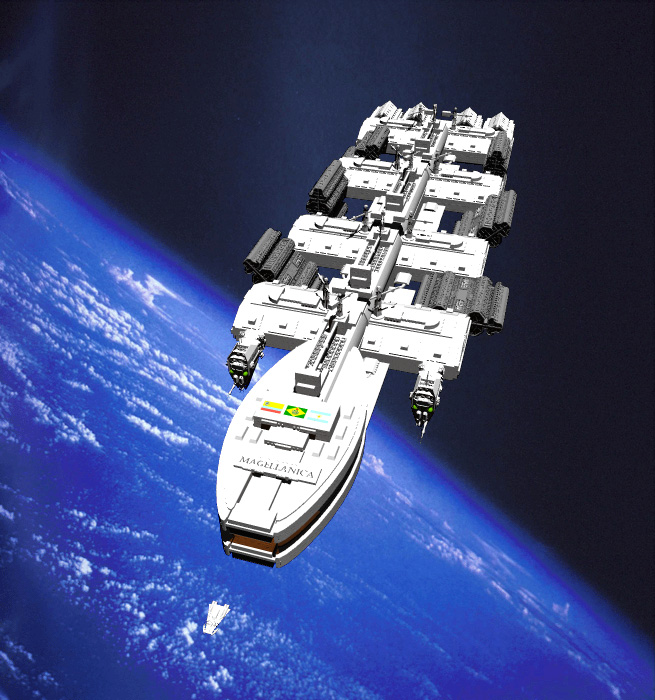
The interstellar ship Magellannica was halfway completed when the teleportation revolution occurred. Originally intended for a slow trip where most of the crew was stored in cryostasis, it was now redesigned to carry an awake crew on a far shorter trip. An early phasing probe sent in 2035 to the Delta Pavonis system and back confirmed an earlier suspected a habitable planet, and it was decided to send the Magellannica there using the new teleportation drive. The whole project was rushed, as the governments of United South America feared both losing the race to the Third British Empire or even Madagascar. Another contributing factor was the fearsome threat of a war using teleporting nanotechnology: by 2035 it was clear that the Third Empire was developing weapons that could project destruction anywhere on Earth and in cislunar orbit. Many colonists were convinced the only chance of survival for humanity lay in the stars.
The ship was launched May 5 2037. It successfully teleported from Earth orbit to Mars, the Trojan asteroids and finally to Jupiter. There it began the long series of jumps towards Delta Pavonis. But a few light hours away something went wrong and it vanished. Sabotage had caused a drive malfunction, depositing the ship in Ex Tempore. There the colonists found themselves in a far more alien environment they had ever imagined, unable to return to their homeworld. The colonists are at present divided into a number of fractions. One group, led by Passenger-Speaker Ortiz, wants to return to the universe and colonize a planet as originally intended. Another group, led by a consortium of the science-economy crew, want to settle in Ex. The captain is still unsure on which side to take, especially since splitting the crew and colonists is going to make survival hard.
Another problem is the simultaneous arrival of a Third Empire group of battlebases. The bases were sent as an experiment in 2040, equipped with personnel, weapons and scientists - Chakradeva wanted to test some theories on reaching "hyperspace" and deliberately gambled several thousand people (including the researchers who had convinced him of its possibility). When they never returned "hyperspace" was abandoned. The Empire went on abusing its citizens until the World Cleansing War of 2042.
The timeline was subsequently wrecked in a fairly nasty eruption of phasing nanodevices unleashed in the 27th century by the Mukhalla Egalitary for unclear reasons; the two Mukhalla to arrive at Ex never revealed anything and vanished without trace into the Labyrinth. A quick intervention from the Ex humans and strigae in the 1600's prevented the whole Magellanica culture from ever coming into existence, stopping the "phasemites".